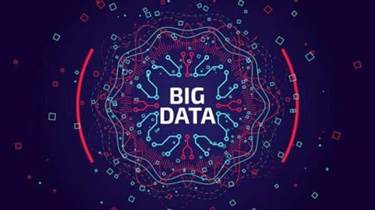Service Integration Maturity Model Wikipedia
Chances are your company is feeling the pain of manual processes and lack of visibility that normally comes with the adoption of business apps at scale. It’s ok to be on the left side of the integration spectrum, as long as you understand where you stand, and what you and your company gains by proactively driving your integration strategy to the right. At this point, companies start centralizing their resources. IT and operations holistically build and own enterprise-wide integrations, collaborating with different teams to design automation solutions.

The IT team handles mission-critical integrations because they touch multiple departments, resources, and business applications. Meanwhile, business users from other teams and departments can handle certain processes, automations, or integrations on their own. With the help of an iPaaS, integration is seen as a strategic advantage to proactively get ahead and drive the business forward. While business apps today are simple to use, easy to set up, and address every conceivable challenge any company faces, the best-of-breed strategy is not enough. As each department adopts its own set of apps, the number of silos across the organization grows, creating bottlenecks.
Software Measurement and Metrics
Highly dependent on individual skills and knowledge rather than standardized processes. No basis for predicting product quality, time for completion, etc. The organization should be responsible for providing improvement opportunities so that people in the organization can take advantage of them. The management should be responsible for enhancing the capability of the people in the organization. Many organizations struggle to manage their vast collection of AWS accounts, but Control Tower can help.

At this level, documentation of the standard guidelines and procedures takes place. High risk of project failure or delays due to lack of process control and stability. It does not have good empirical support and this same empirical support could also be constructed to support other models. An organization should invest in improving the capabilities and skills of the people as they are important for its success. The Python import statement carries a security risk that developers and enterprises need to watch out for.
Service Maturity Assessment Questions
Business and infrastructure components are discrete and re-usable through code and EAI re-use techniques. Individual parts of the organization are developing their own software independently, with no integration of data, processes, standards, or technologies. IT organizations struggle to meet the challenge of pervasive integration for digital business transformation. CTOs should use Gartner’s maturity model to assess the current status of, and to improve, the organization’s integration competency. The use of these models depends on what stage your business is at, but the benefit is that at whatever level you are operating at, maturity models can provide you with structured guidelines to improve your system. The company’s operations are now expanded and need to be viewed holistically.
Since, new technologies and organizational practices emerge rapidly, the organizations should continually improve their practices and develop the abilities of people. The improvement in the capability of people should be done as a process. This process should incorporate appropriate practices and procedures. Competition arises when different organizations are performing the same task. In such a case, the people of an organization are sources of strategy and skills, which in turn results in better performance of the organization.
The Open Group Service Integration Maturity Model (OSIMM) Version 2
Architect unique customer experiences for each digital medium. In this stage, the lack of trust in data is apparent and departments struggle to collaborate. Strong executive buy-in and stakeholder engagement is crucial to progress from this stage. Digital transformation drives new business opportunities https://www.globalcloudteam.com/continuous-delivery-maturity-model/ and operational efficiencies that were previously bottlenecked by traditional ways of conducting routine business tasks. Training Programs- It focuses on the enhancement of knowledge and skills of the team members including the developers and ensuring an increase in work efficiency.
At the optimizing level, processes are constantly improved through monitoring feedback from processes and introducing innovative processes and functionality. At the initial level, processes are disorganized, ad hoc and even chaotic. Success likely depends on individual efforts and is not considered to be repeatable.
Integration maturity model
This is because processes are not sufficiently defined and documented to enable them to be replicated. The organization is more proactive than reactive, and there are organization-wide standards that provide guidance. The project, whose main sponsors were the Office of the Secretary https://www.globalcloudteam.com/ of Defense and the National Defense Industrial Association, included members of industry, government, and the Carnegie Mellon Software Engineering Institute . Models were initially created for the Department of Defense to assess the expertise and quality of software contractors.

Automation of company operations by using SaaS is achieved by first assessing your business processes through the integration maturity model. After this assessment, SaaS can be incorporated by implementing the SaaS maturity model. The OSIMM base model provides maturity indicator weighting based on a 10-point scale by maturity level.
Architecture
At this point, your company is expanding and the number of customers has significantly increased. Each customer is using the same version and “instance” of your software. Each customer has their version and instance of your software.
- An integration maturity model is a tool that helps companies adopt automation of their systems by using SaaS.
- This concept is referred to as service integration maturity within OSIMM.
- Hustle just a bit and download this editable integration maturity model PowerPoint template slide.
- Every growing company will encounter these manual bottlenecks.
- Services run on an IT infrastructure that is supported by the appropriate protocols, security mechanisms, data transformation, and service management capabilities.
Mary Beth Chrissis, Mike Konrad, and Sandy Shrum Rawdon were the authorship team for the hard copy publication of CMMI for Development Version 1.2 and 1.3. The Addison-Wesley publication of Version 1.3 was dedicated to the memory of Watts Humphry. Eileen C. Forrester, Brandon L. Buteau, and Sandy Shrum were the authorship team for the hard copy publication of CMMI for Services Version 1.3.
What is Business Service Management?
This is in contrast to the lower levels of service maturity, where the service is more closely coupled to the infrastructure. Although virtualization has been used in non-SOA systems, this level extends the concept of virtualization to services. The IT systems in the silos have been analyzed and broken down into component parts, with a framework in which they can be developed into new configurations and systems. There may also be some limited analysis of the business functionality into components. This causes difficulties in development and deployment of shared business processes.
Category: Uncategorized










